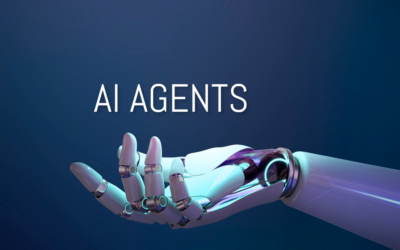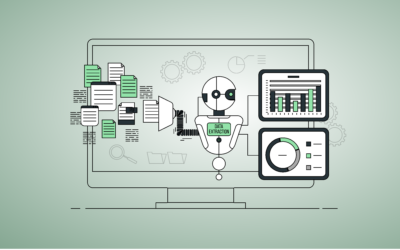Table Of Content
Due to rapid advancements in the generative AI landscape, there has been an exponential increase in demand for building generative AI applications. However, these projects can only achieve efficiency if proper management and operations strategies are in place to transition from prototypes to real-world use cases.
The availability of foundational model APIs and open-source Large Language Models (LLMs) has simplified the development of multiple generative AI applications, primarily due to the effective tooling and processes that facilitate efficient implementation. Understanding the significance of LLMOps and ML pipelines is crucial for creating successful business use cases and managing API production efficiently. The concepts discussed below provide a foundation for exploring real-world applications.
What are LLMOPs?
LLMOps, an extension of MLOps, focuses on developing, operating, and lifecycle management of large language models (LLMs). It includes the processes and tools designed to automate and streamline the AI cycle specifically for LLMs. LLMOPs involve data preparation, model training, model tuning, deployment, monitoring, maintenance, and updating, emphasizing the unique challenges and requirements of managing large-scale language models.
Other relevant aspects of managing and operating LLMs involve systematically performing a continuous evaluation, testing different prompts (prompt performance) to determine which model generates the most accurate, relevant, or useful responses, and optimizing the interaction between users and AI models.
Additionally, it is essential to update or modify prompts to instruct the LLM to maintain or enhance the quality of the model’s outputs after it has been updated or altered. If the application uses multiple LLM calls that involve multiple processing steps, it may use orchestration frameworks like LangChain and LlamaIndex. Managing dependencies also adds additional complexities. Therefore, understanding how to build an end-to-end workflow for LLM-based applications is critical. Learn more about CI/CD best practices. When building and orchestrating an LLMOps pipeline, carefully selecting a foundational model or Code LLM tailored for code-related tasks is crucial. Integrating these models seamlessly can significantly boost the efficiency and innovation of business development processes.
Krasamo AI developers specialized in LLMOps workflows. Contact us for more information.
Building LLMOps Pipelines
Building and operating a model customization workflow and deploying it into production requires following LLMOps best practices. The development of most LLM applications entails constructing and orchestrating comprehensive pipelines. These pipelines, or sequences, weave together various components, such as data ingestion, prompt engineering, multiple LLM interactions, integration with external data sources or APIs, retrieval augmented generation (RAG) techniques, semantic search, and post-processing activities. The fundamental task in this process involves meticulously orchestrating the entire pipeline to ensure seamless operation and data flow from one stage to the next.
LLM application development is typically about building MLOps pipelines that consist of orchestrating the following key stages (steps):
Data Preparation
- Exploring and preparing data for LLM tuning. Engineers iteratively explore and prepare data for the ML lifecycle by creating data sets, tables, and visualizations that are visible and sharable across teams.
- Data transformations for creating datasets–transform, aggregate, and de-duplicate.
- Data Warehouses
- SQL Queries for cleaning and preparation (processing at scale).
- Create Pandas for smaller datasets.
- Create Pandas
DataFrames to explore data. - Instruction of Prompt Templates
- Versioning and storing training data
- Cloud Storage Buckets
- Containers
Model Training. In a production LLMOps pipeline, model training is typically an ongoing process that involves continuously incorporating new data and feedback to improve the model’s performance. This can be achieved through either batch processing or real-time updates via a REST API.
For batch processing, the pipeline would periodically retrieve new production data, generate predictions using the current model, and evaluate the model’s performance. Based on these evaluations, the training data can be updated with additional examples, corrections, or new instructions. This updated dataset is then used to retrain the model, often employing techniques like parameter-efficient fine-tuning or supervised fine-tuning, depending on the specific requirements.
Model versioning is crucial in this stage, as it allows tracking and managing different iterations of the model artifacts, training data, and evaluation results. This enables rollbacks to previous versions if necessary and facilitates reproducibility and auditing.
The training and evaluation data should be stored in optimized file formats like JSONL (JSON Lines), TFRecord, or Parquet, designed to efficiently process and store large datasets. These formats support features like compression, parallelization, and schema enforcement, making them well-suited for LLMOps pipelines dealing with massive amounts of data.
- Parameter-efficient fine-tuning
- Supervised fine-tuning
- Versioning model artifacts
- Training and Evaluation Data
- File Formats
- JSONL (JASON LINES)
- TFRecord
- Parquet
- File Formats
Pipeline Design and Automation. Experienced developers create the code components to build the pipeline steps, automating execution and orchestrating the LLM tuning workflow for many use cases using large text datasets.
- Designing and automating the LLM tuning workflow
- Orchestrating pipeline steps using tools like Apache Airflow or Kubeflow Pipelines to define pipeline steps and configure execution logic.
- Building reusable pipelines with components like Python code, DSL libraries, and YAML configurations
- Managing dependencies and containerization
Model Deployment and Serving. Deploy your model into production and integrate it into your use case. Our engineers automate testing and model deployment using CI/CD pipelines.
- Package and deploy models as REST APIs or batch processes
- REST API. Create the code to deploy your model as an API in real time.
- Batch processes–processing data collectively at scheduled times or under certain conditions.
- Integrating the model with services using frameworks like TensorFlow, PyTorch, and Hugging Face Transformers.
- Load test models to validate performance at scale
- Deploying models using cloud services like Vertex AI (SDK)
- Enable GPU acceleration for efficient inference
Predictions and Prompting. Once the LLM model is deployed, users can interact with it by sending prompts and obtaining predictions. Getting predictions involves crafting a prompt, sending it to the deployed API, and receiving the model’s response based on that prompt. Effective prompting is crucial for obtaining high-quality predictions. Some of the tasks related to prompts are the following:
- Sending prompts to the deployed model and obtaining predictions
- Handling prompt instructions and prompt quality and techniques like
- Few-shot learning
- Prompt engineering
- Setting thresholds and confidence scores according to the use case
- Probability scores–model’s confidence in its predictions
- Severity scores–assess the potential impact or risk associated with a particular prediction
- Load balancing with multiple models–distributes the incoming prompts across multiple instances of the same or different models, improving overall throughput, reliability, and fault tolerance.
- Retrieval Augmented Generation (RAG) enriches LLM responses by dynamically retrieving and incorporating relevant information from a vast corpus at runtime, utilizing external data in real time to enhance their responses. This approach improves the model’s ability to handle diverse and complex queries.
Model Monitoring. Effective model monitoring encompasses many practices, from tracking key performance indicators to ensuring models adhere to ethical standards. The following mechanisms and strategies are deployed to monitor, evaluate, and refine LLMs, ensuring they remain efficient, fair, and aligned with evolving data and user expectations.
- Implement data and model monitoring pipelines
- Monitoring operational metrics (latency, throughput, errors) and evaluation metrics
- Set alerts for model drift, performance degradation, or fairness issues
- Conducting load tests and ensuring permissible latency
- Considering Responsible AI practices and safety attributes
- Handling updates and retraining as needed
- Integrate human feedback loops for continuous learning
- GPUs and TPUs Processors
Pipeline Execution. Execution is where the orchestrated tasks—such as data preparation, model training, model evaluation, model deployment, and monitoring—are actively carried out according to predefined schedules, triggers, and dependencies.
Krasamo AI Services
Working with large language models (LLMs) is heavily focused on managing the end-to-end pipeline or workflow rather than just building or training the LLM itself. Discuss with a Krasamo AI Engineer about a use case and learn more about the following topics:
- Prompt Design
- Prompt Management in production
- Model Evaluation
- Model Monitoring in production
- Model Testing of LLM systems or application
- Building Generative AI Applications












